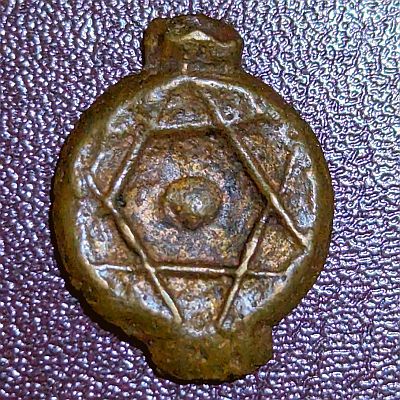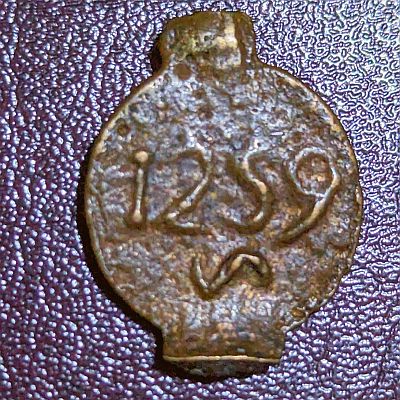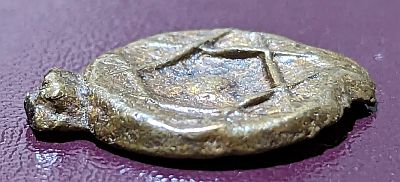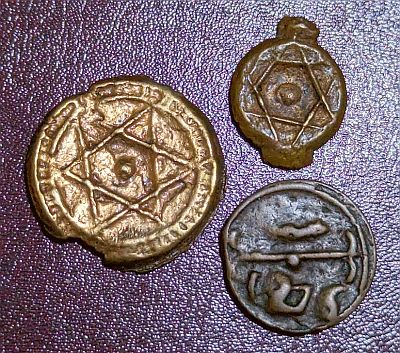This was one of my first extremely tactile, cast coins. Quite different to the perfectly round, machine struck coins most of us use today. The design on this coin is the Seal of Solomon, which stems from a signet ring which belonged to King Solomon of Israel. Jewish & later Islamic & Western occult tradition ascribes the ring of Solomon magic powers.

This coin is notable for having quite a large amount of “sprue” left on it. Like many cast coins, these were cast in a “tree”. This necessitates filing the edge to remove the excess metal, however this is not always fully done, as in this case. Stacks-Bowers sold a Moroccan Falus casting tree and have a nice picture on their site.

On the reverse, is the Islamic year, 1259, over the mintmark. I’m actually not sure which mint this one is. Based on the four 1259 1 Falus coins on Numista, it’s not Rabat or Sale, which both have the date underneath, and one has no mintmark and lines either side, so unless there are any missing from that list, it must be Marrakesh?
Morocco used cast Falus coins until the introduction of the Rial in 1882 (Islamic year 1299). Since then, coins have been “milled” (that is, made by machine, as modern mints use).
But what is “Islamic year”? Let’s have a quick diversion to calendars!
Most of the world uses the “Gregorian calendar”, which was developed in 1582, as an improvement in accuracy on the Julian calendar developed under Julius Caesar in 46 BC (By the year 2100, the Julian calendar will be 14 days behind the Gregorian calendar). Dates in the Gregorian calendar are based around the time of Christ (BC is Before Christ, AD is the Latin Anno Domini, meaning the year of Our Lord). Dates in the Islamic or Hijri calendar, are based around the time of the Prophet Mohammed. IslamicFinder.org has an Islamic calendar. This can be useful for converting dates on coins, although Numista also converts dates for most Islamic coins.

Back to our coin, and I really like the tactile nature of this piece. The 1 Falus is one of the smaller coins at 20mm diameter – in fact there were smaller, 1/2 Falus coins (15mm diameter). Pictured below is the 1 Falus with a 2 Falus and a 4 Falus coin:

Note that the sprue has been cut off a little too aggressively on the 4 Falus, leaving a hole. The 2 Falus, dated 1276 (1860) is showing the other side with a slightly different arrangement (mintmark above the date with a decorative line and dot between).
There are a good number of these coins, although quite similar, there are numerous differences. It is quite hard to read the date or mintmark on some, but they are great to hold.


Leave a Reply